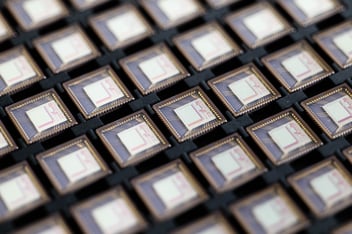Art Restoration With SWIR
Applications for SWIR use cases are limitless because of its ability to provide images that are not visible. One application that is especially important is art restoration. Art restoration is a delicate process, due to aging making pieces sensitive or brittle. Applying SWIR in their imaging process allows conservators to view past years of built-up grime or colors that have long since dulled from time and sun exposure, decreasing the amount of handling. Throughout the years, conservators have attempted to restore paintings but might have used incorrect color pigments/methods because of their limited technology, efforts dating back hundreds of years ago, that may have damaged the paintings in the process. So, SWIR's ability to see beyond pigments to original sketching made onto the canvas is incredibly helpful for museums or professionals to effectively restore these timeless pieces to their original condition.
Paintings, along with sculptures and carvings, endure incredible damage from sun exposure, harsh environments, and reactions in the chemicals used for the painting. That is where the benefit of SWIR imaging comes into play, the ability to see beyond the layers of damage made to the artwork and seeing the original patterns, sketching, and brush strokes will help art conservators in their important work of bringing these priceless art pieces back to life.
So, how does SWIR work in art conservation? SWIR's spectrum being 950-1700nm allows wavelengths to penetrate and reflect the original paint to distinguish the colors used, helping conservators map the pigmentation originally used. There are two methods to measure reflectiveness: infrared reflectography or optical coherence tomography (OCT). Using that information, they can color match to accurately restore what the artwork had originally looked like. As well as detailing the underdrawings the original artist had made on the canvas that served as the base for the painting, this helps curators authenticate and date the artwork. Shown in the figure below, an example of SWIR use in art restoration and authentication. But it is important that the material used for the sketching contrast and reflect, such as charcoal and chalk, otherwise it would not be distinguishable.
 Figure 1. Left to right: Visible image; SWIR image showing the original drawing; detailing of the drawing highlighted in red. Painting of Salomon Jacobsz van Ruysdael's Landscape with Deer Hunters, Images provided by Yosi Pozeilov, LACMA Conservation Center
Figure 1. Left to right: Visible image; SWIR image showing the original drawing; detailing of the drawing highlighted in red. Painting of Salomon Jacobsz van Ruysdael's Landscape with Deer Hunters, Images provided by Yosi Pozeilov, LACMA Conservation Center
Lastly, it provides curators with vital information to accurately assess damage made to the painting, such as location and level of severity. Mapping out where damage is would allow curators to produce proper plans on how to repair the damage. In conclusion, SWIR use in art restoration is incredibly important for efforts of maintaining these timeless pieces. Allowing the public to continue to appreciate them for years to come.



